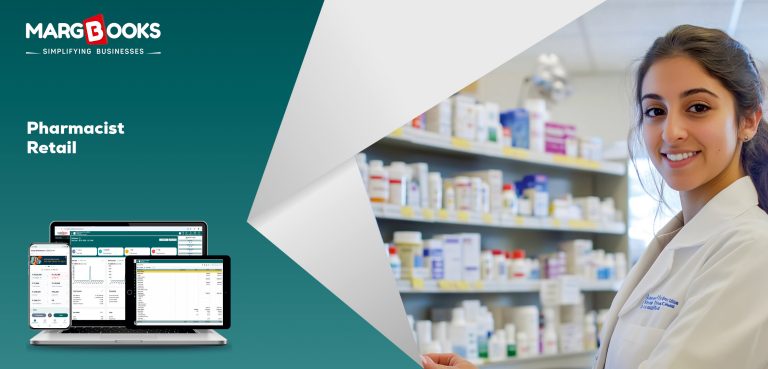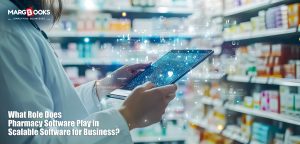The world of retail pharmacy is undergoing a remarkable transformation. With the continuous evolution of technology, retail pharmacists are now tasked with handling more than just prescriptions and patient care. Today, pharmacists are integral to the smooth operation of the entire pharmacy system, from inventory management to billing, and even customer engagement. In this rapidly advancing environment, system integration has become essential for retail pharmacists to perform effectively and efficiently.
As we move into 2025, the need for integrated systems in retail pharmacy operations is more pressing than ever. System integration helps streamline various processes, reduces errors, and improves overall workflow. But what does it mean for pharmacists, and why is it so important? Let’s dive into the topic of system integration and explore how it’s revolutionizing the role of pharmacists in retail environments.
What is System Integration in Pharmacy?
System integration refers to the process of connecting various software systems and tools within the pharmacy to work together seamlessly. Instead of having disparate systems that handle tasks like inventory, billing, patient data, and prescription management separately, integration allows all these elements to work in unison. This means pharmacists can access all the information they need from a single interface, leading to improved efficiency and reduced errors.
For retail pharmacists, system integration typically involves combining multiple systems, such as pharmacy software, pharmacy billing software, point-of-sale (POS) systems, electronic health records (EHR), and more. These systems are designed to share data, reducing the need for manual data entry and minimizing human errors.
The Key Benefits of System Integration for Retail Pharmacists
Let’s break down why system integration is a game-changer for retail pharmacists in 2025.
1. Increased Efficiency and Productivity
With an integrated system, retail pharmacists can access a comprehensive view of the pharmacy’s operations without having to switch between multiple systems. For example, pharmacy software can seamlessly communicate with pharmacy billing software, inventory systems, and prescription tracking software. This reduces the time spent on manual tasks such as transferring data, allowing pharmacists to focus on more important responsibilities like patient care and consultation.
- Faster Prescription Processing: Integrated systems ensure that pharmacists can quickly verify prescriptions, update patient records, and even send prescriptions directly to a doctor or health provider if needed.
- Efficient Billing: When pharmacy software and billing software are integrated, billing becomes more accurate, eliminating discrepancies in pricing and reducing the time spent on manual invoicing.
2. Improved Accuracy and Reduced Errors
In the fast-paced environment of a retail pharmacy, mistakes can happen, especially when there are multiple systems in use. A small error in inventory management or billing can result in significant financial losses or even patient harm. System integration helps eliminate these errors by ensuring that all the software used within the pharmacy is synchronized.
- Inventory Management: Integrated systems automatically update stock levels as medications are dispensed or restocked, reducing the risk of running out of essential drugs or overstocking.
- Accurate Billing: When pharmacy billing software is integrated with other systems, it ensures that the correct charges are applied every time, preventing billing mistakes that can cause customer dissatisfaction.
3. Enhanced Customer Experience
In the retail sector, customer satisfaction is everything. Integrated systems enable a smooth and seamless experience for customers by providing a faster, more accurate service. With quicker processing times and up-to-date information, pharmacists can offer better consultations, more personalised care, and faster prescription fulfilments.
- Personalised Recommendations: By having patient data integrated with other pharmacy systems, retail pharmacists can make tailored recommendations based on individual needs, improving customer service.
- Faster Service: System integration reduces wait times for customers by speeding up prescription fulfilment and billing processes.
4. Better Regulatory Compliance
The healthcare sector is heavily regulated, and pharmacies must comply with various laws and guidelines to ensure patient safety and privacy. By integrating systems, retail pharmacists can more easily manage and comply with regulatory requirements.
- Patient Data Management: Integrated systems help pharmacists store patient data securely, ensuring compliance with data protection regulations like HIPAA in the US or similar regulations in India, such as the Personal Data Protection Bill.
- Accurate Reporting: When systems are integrated, pharmacists can generate reports that are required for regulatory audits, ensuring timely and accurate submissions.
5. Cost Savings and Profitability
While integrating systems might require a substantial initial investment, it can lead to significant long-term cost savings. By automating tasks and reducing errors, pharmacies can save on operational costs.
- Reduction in Wastage: Integrated pharmacy software and inventory management systems ensure that stock levels are optimally maintained, reducing wastage of expired or unused medication.
- Improved Profit Margins: By streamlining the billing process, ensuring accurate stock levels, and improving workflow efficiency, pharmacies can operate more profitably.
How Margbooks Supports System Integration in Retail Pharmacy
As pharmacies move towards more integrated systems, it’s important to choose the right tools and platforms. Margbooks, a leading provider of pharmacy software solutions in India, offers software that is specifically designed to streamline retail pharmacy operations.
- Complete Integration: Margbooks integrates all essential features such as prescription management, billing, inventory control, and customer management into one seamless platform.
- User-Friendly Interface: Designed with retail pharmacists in mind, Margbooks’ software is intuitive and easy to use, ensuring quick adoption and minimal training time.
- Compliance Ready: Margbooks ensures that all transactions, inventory, and data are fully compliant with Indian pharmacy regulations, making it easier for pharmacists to stay ahead of audits and compliance requirements.
Looking Ahead: The Future of System Integration for Retail Pharmacists
The benefits of system integration will only continue to grow as we move into 2025. With emerging technologies like artificial intelligence (AI) and machine learning (ML) becoming more prevalent, the integration of these systems will lead to even more advanced functionalities in retail pharmacy operations.
Pharmacists will be able to predict inventory needs, provide more precise medication recommendations, and offer a highly personalised experience for customers—all through the power of integrated systems. This will enable retail pharmacies to not only enhance their operational efficiency but also provide better services to their patients.
Conclusion
System integration is no longer a luxury for retail pharmacists—it’s a necessity. In 2025, it will be critical for pharmacies to adopt fully integrated solutions that streamline operations, improve accuracy, enhance customer satisfaction, and ensure regulatory compliance. By leveraging tools like pharmacy software and pharmacy billing software, pharmacists can focus on what matters most: providing the best possible care for their patients.
Investing in system integration, with solutions like Margbooks, will prepare pharmacies for the challenges and opportunities of the future, ensuring that they remain competitive in an increasingly technology-driven world.




